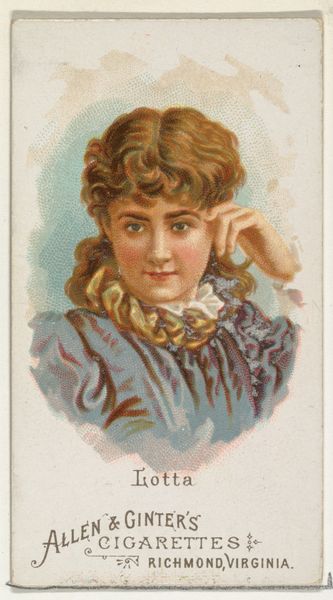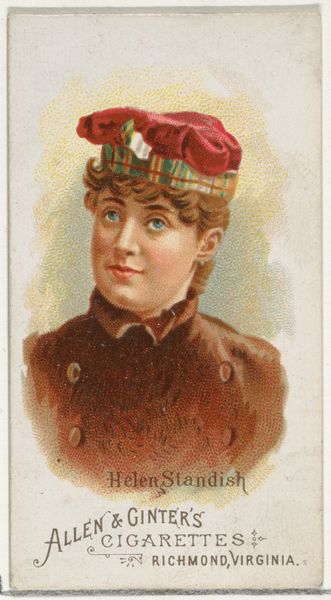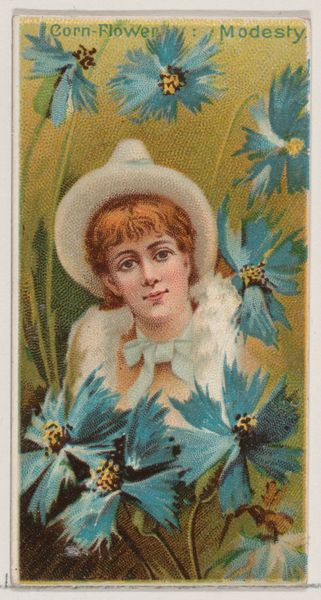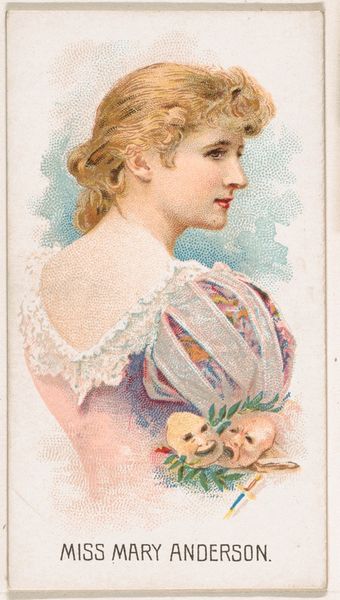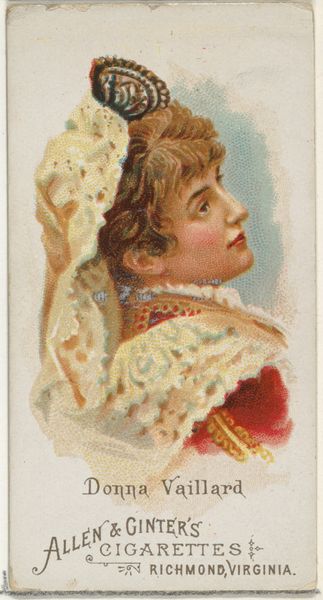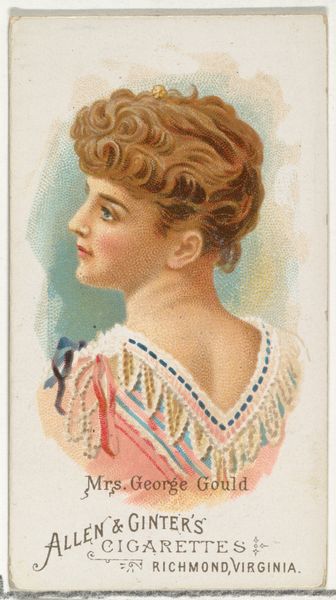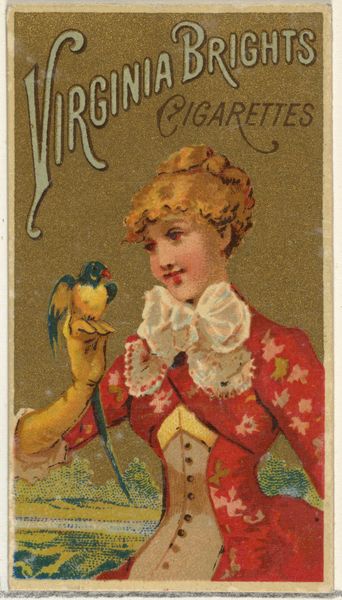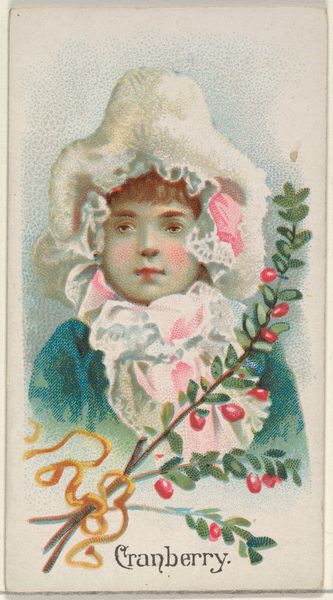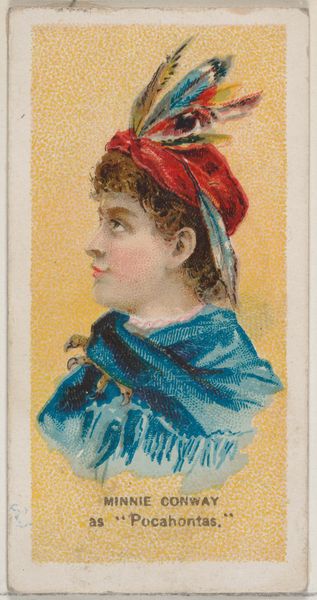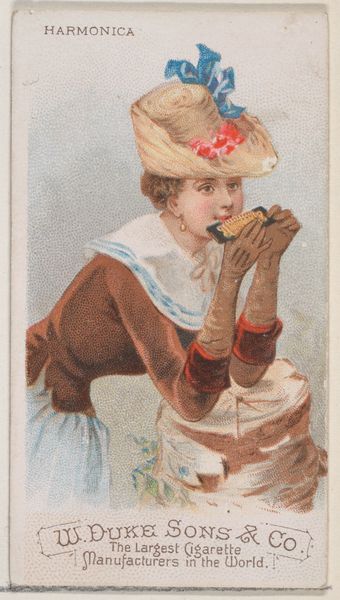
Emma Nevada, from World's Beauties, Series 1 (N26) for Allen & Ginter Cigarettes 1888
0:00
0:00
drawing, print, watercolor
#
portrait
#
drawing
#
art-nouveau
# print
#
impressionism
#
watercolor
#
portrait drawing
#
watercolour illustration
#
academic-art
Dimensions: Sheet: 2 3/4 x 1 1/2 in. (7 x 3.8 cm)
Copyright: Public Domain
Curator: Allen & Ginter produced this watercolor and print portrait of Emma Nevada in 1888, as part of their "World's Beauties" series included with cigarette packs. Editor: It's quite charming. I'm immediately struck by the artist's use of white—those tiny, soft dabs meant to represent falling snow create a diffuse, almost dreamlike quality to the image. The light seems to emanate from within the portrait itself. Curator: Indeed. Placing this in its historical context, it's impossible to ignore the problematic nature of these types of commercial images, and their role in promoting and normalizing smoking, especially to women. This card and others like it participated in the creation of gendered marketing strategies that shaped consumption habits in the late 19th century, using women like Nevada to create a desirable association. Editor: From a purely aesthetic viewpoint, I admire the layering effect, moving from the cool background to the warmth of Nevada's face and the fur details. The composition emphasizes her gaze, inviting the viewer into an intimate moment. What do you see as central to the artist's portrayal? Curator: I think that she is made legible as a commodity in this instance. She was a famous opera singer—an exceptionally successful woman for the era. By literally placing her image alongside a product like cigarettes, her likeness and fame become entwined with its branding, further legitimizing its consumer base and reach to women and their place in society at large. Editor: Interesting that you frame this around visibility and legitimation—especially with the rather flat space created by the rendering of details through layered textures. Even so, it offers a delicate tonal range from her porcelain skin to the richness of her hat, offering a carefully balanced visual harmony. Curator: And while the artist’s hand is visible, consider what isn’t seen; the physical exploitation of labor of those, especially women, working in tobacco and textile industries at the time—industries further enriched by objects just like this. So the art and artifice are complicit in a system. Editor: Thanks, that was really revealing in terms of thinking about the larger significance of art within this socio-political sphere. Curator: The complexities present within artistic depictions and societal norms should encourage conversations on historical contexts—always, and in everything we study.
Comments
No comments
Be the first to comment and join the conversation on the ultimate creative platform.
